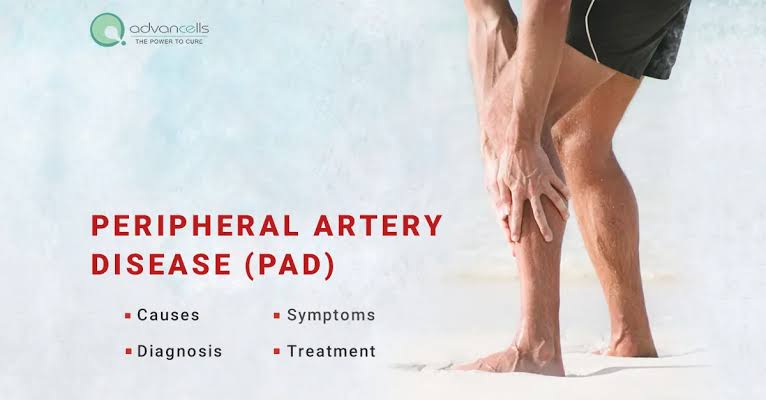
Peripheral artery disease, or PAD, causes blockages or narrowing of the arteries that supply blood to the arms or legs. Atherosclerosis, or the buildup of fatty deposits in the arteries, is a common term used to describe the cause of peripheral arterial disease, according to onlymyhealth.
What are the symptoms of peripheral arterial disease?
Many people with PAD have only mild symptoms. The most noticeable is leg pain while walking (claudication).
Muscle discomfort or cramping in the arms or legs that begins during vigorous exercise and stops with rest is an indication of lameness. The most common area where pain occurs is the calf, which ranges from mild to severe. Severe leg pain, known as a disabling claudication, can make it difficult to walk or do other types of physical activity.
And when peripheral artery disease progresses, it can also interrupt sleep. You can get temporary relief from this classic pain (relieving pain) by walking or hanging your legs over the edge of the bed.
Apart from lameness and pain on rest, an ulcer or gangrene that does not heal is another important symptom.
What are the risk factors for peripheral arterial disease?
The use of tobacco products is the most potent risk factor for PAD
Uncontrolled diabetes
Old age, if you are 50 years of age or older
Ethnicity
Personal or family history of heart or blood vessel disease
High blood pressure or high blood pressure
High cholesterol or high blood fats
Morbid obesity
a blood clotting disorder;
What are the treatments for peripheral artery disease?
PAD can be treated with lifestyle modifications, medications, and procedures.
What are the required modifications in your lifestyle?
Stop using tobacco products
Eat a well-balanced diet that is high in fiber and low in cholesterol, fat and sodium
Exercise or exercise every day and keep your stress level low. You can perform yoga and meditation to get the benefits.
Managing other health conditions, such as high blood pressure, diabetes, or high cholesterol
Maintain foot and skin care regimens to prevent infection and reduce the risk of complications
Dive into a supervised exercise program. People with lameness should walk at least 30 to 60 minutes a day. Walk until the discomfort decreases to a moderate level, then stop, or walk away completely, and then start walking again.






